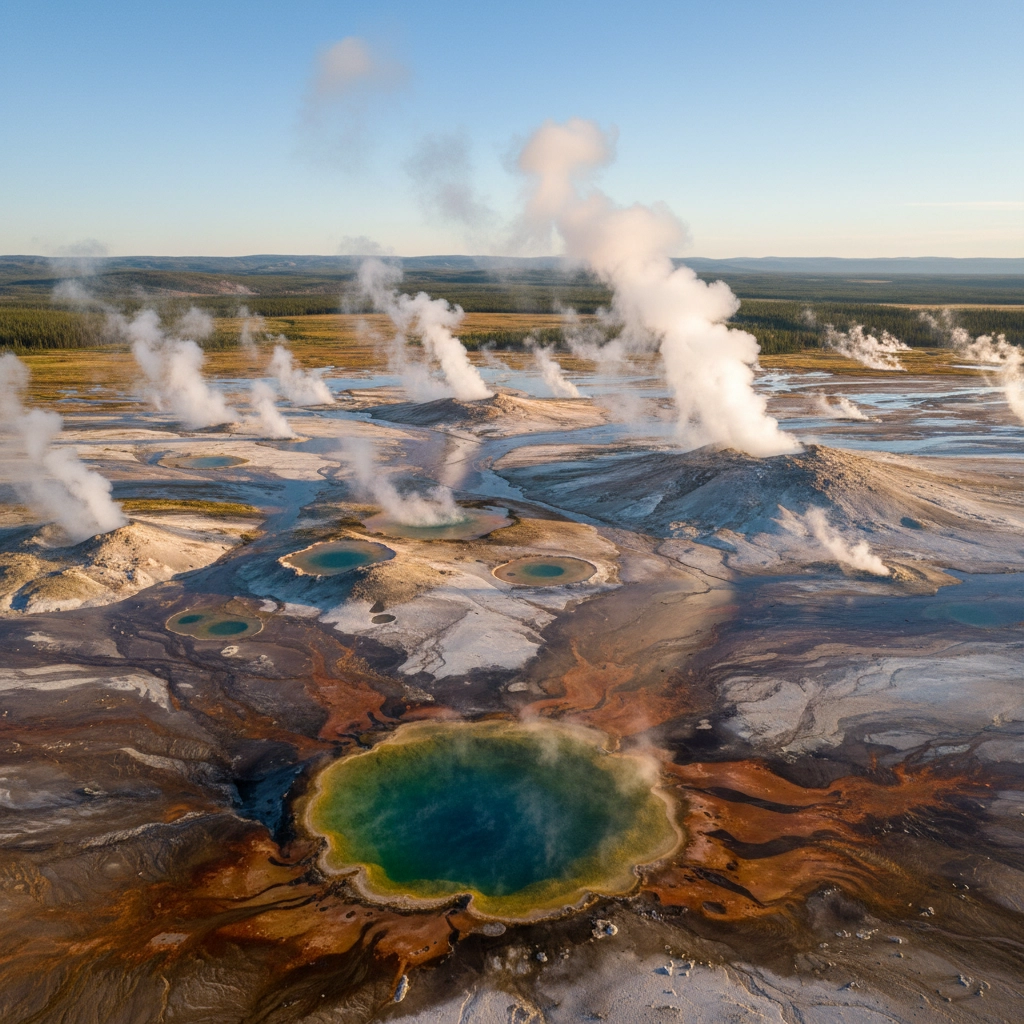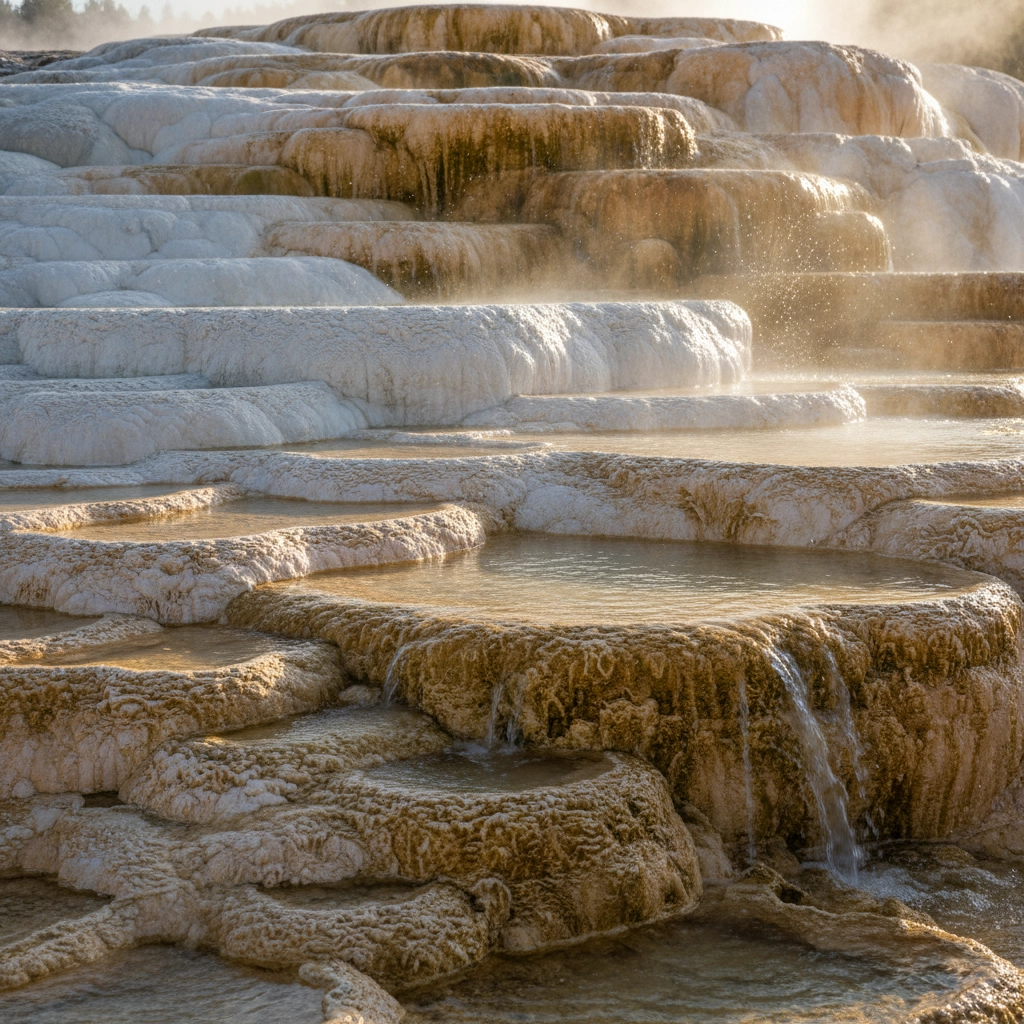Hidden Science Spots in Yellowstone: Secret Learning Opportunities for Student Groups
- Caleb Mullenix
- Oct 21
- 5 min read
Ensuring your students experience the full scientific richness of Yellowstone National Park requires looking beyond the crowded boardwalks of Old Faithful. While millions of visitors flock to the park's iconic features, the most transformative educational opportunities often occur at lesser-known locations where students can engage directly with ongoing scientific research and observe phenomena invisible to casual tourists.
Strategic Planning for Hidden Scientific Discoveries
Begin by researching Yellowstone's extensive network of thermal areas beyond the famous geysers. The park contains over 10,000 thermal features clustered into approximately 120 distinct thermal areas, many of which remain relatively unexplored by typical tour groups. Create an itinerary that prioritizes these hidden gems to maximize learning opportunities while avoiding overcrowded locations.
Advise students that Yellowstone functions as a massive outdoor laboratory with dozens of scientific monitoring stations scattered throughout the park. GPS stations, seismometers, temperature sensors, and tiltmeters continuously collect data about volcanic and hydrothermal systems. Emphasize the importance of recognizing these research instruments during your expedition, as they represent real-time science in action.
Norris Geyser Basin: The Park's Geological Command Center

Direct your students to Norris Geyser Basin, the oldest and hottest of Yellowstone's thermal areas. This location offers unparalleled opportunities to observe how different hydrothermal features connect beneath the surface. Ensure that students understand they are witnessing one of the most geologically active areas in the entire park, where temperatures can exceed 459°F just beneath the surface.
Create structured observation activities at Norris that demonstrate the park's subsurface plumbing system. Recent electromagnetic research has revealed that hot hydrothermal fluids ascend nearly vertically from depths exceeding one kilometer. Share this information with students to help them visualize the "mystery sandwich" of geology between visible surface features and deep magmatic systems.
Encourage students to document the constant changes occurring at Norris. Unlike static museum exhibits, this thermal area demonstrates how faults and fractures guide rising waters while lava flow boundaries control shallow groundwater aquifers. Establish specific observation points where students can safely record temperature variations, steam patterns, and mineral deposits.
Mammoth Hot Springs: Active Geology in Motion
Navigate your group to Mammoth Hot Springs, located just north of the Yellowstone caldera, where students can witness active travertine formation processes. This location provides exceptional close-up views of thermal features that demonstrate limestone dissolution and redeposition in real-time.
Organize systematic documentation activities as students walk along the terraced boardwalks. Advise them to observe how different water temperatures and mineral concentrations create varied formations. Discuss emergency procedures for staying on designated paths, as the seemingly solid formations can conceal dangerous thermal areas.
Create measurement activities where students can safely record the rate of mineral deposition by observing established markers. Emphasize the importance of understanding geological time scales while witnessing processes that occur over days, months, and centuries.
West Thumb Geyser Basin: Underwater Thermal Systems

Direct student attention to West Thumb Geyser Basin, situated on Yellowstone Lake's shoreline, where volcanic activity heats fluids that create both visible and underwater hydrothermal vents. This unique location demonstrates how thermal systems extend beneath lake surfaces, providing opportunities to discuss aquatic thermal ecology.
Establish observation protocols for identifying thermal features beneath the lake's surface. Many hydrothermal vents remain hidden underwater, creating opportunities for students to hypothesize about unseen geological processes. Share detailed information about water temperature variations and their effects on aquatic ecosystems.
Encourage students to document the interaction between lake water and thermal features. This location provides exceptional opportunities to discuss density stratification, convection currents, and the unique chemistry of thermal waters mixing with fresh lake water.
Yellowstone's Grand Canyon: Reading Earth's Timeline
Navigate to the often-overlooked viewpoints along Yellowstone's Grand Canyon, where students can investigate complex geological stories written in exposed rock layers. This location demonstrates how hydrothermal activity, volcanic eruptions, and plate tectonics create dramatic landscapes over geological time.
Create structured activities for reading rock layer sequences and identifying hydrothermal alteration patterns. Advise students to observe how rising hydrothermal fluids alter rocks as they pass through underground fractures, creating the clay minerals visible in features like surface mud pots.
Establish safety protocols for canyon viewing areas, ensuring students maintain appropriate distances from cliff edges while conducting observations. Discuss emergency procedures and emphasize the importance of supervised exploration in these potentially hazardous environments.
Hidden Wildlife Microhabitats

Identify thermal-influenced microhabitats that support unique wildlife populations often overlooked by standard wildlife tours. These areas, warmed by underground thermal activity, create specialized ecosystems where certain species thrive during harsh weather conditions.
Create wildlife observation protocols that prioritize safety while maximizing learning opportunities. Advise students to document species behavior in thermal-influenced areas compared to standard habitats. Many animals, including elk, bison, and birds, utilize thermal areas for warmth during winter months, creating exceptional viewing opportunities for understanding wildlife adaptation strategies.
Establish specific observation points near thermal meadows and warm springs where wildlife congregation occurs. Emphasize the importance of maintaining safe distances from both wildlife and thermal features while conducting scientific observations.
Advanced Seismic Monitoring Sites
Direct advanced student groups to locations near seismic monitoring stations where they can learn about earthquake detection and volcanic monitoring. Recent research has identified over 86,000 previously hidden earthquakes beneath Yellowstone's surface using machine learning technology applied to seismic data.
Create activities that help students understand how modern scientific instruments reveal phenomena invisible to direct observation. Discuss how GPS stations detect minute ground deformation that indicates magma movement beneath the surface. Advise students about the continuous nature of geological monitoring and its importance for public safety.
Encourage students to consider careers in geological monitoring by demonstrating how scientists use networks of instruments to build three-dimensional images of subsurface structures. Share information about the park's role as a natural laboratory for advancing earth science understanding.
Practical Implementation Strategies
Organize your hidden science spots expedition by coordinating with park naturalist guides who possess years of experience designing custom educational tours. These professionals can complement existing curricula while creating entirely new learning experiences tailored to your students' academic levels.
Schedule your visits during less crowded periods to maximize access to these specialized locations. Early morning and late afternoon periods often provide the best opportunities for detailed scientific observation while avoiding peak tourist congestion.
Create comprehensive safety briefings that address the unique hazards associated with thermal areas, wildlife encounters, and remote locations. Ensure that all students and chaperones understand emergency procedures specific to each location on your itinerary.
Establish documentation protocols that encourage systematic scientific observation while maintaining safety standards. Provide students with structured data collection sheets, temperature monitoring tools, and observation guidelines specific to each location.
Maximizing Educational Impact
Integrate pre-visit preparation activities that familiarize students with geological processes, thermal chemistry, and wildlife ecology before arriving at these hidden locations. This preparation enhances their ability to recognize and understand the phenomena they will observe.
Create post-visit activities that reinforce learning while encouraging students to share their discoveries with broader audiences. Document student observations and measurements to contribute to their understanding of ongoing scientific research in the park.
Connect your hidden science spots expedition with classroom curricula in earth science, chemistry, biology, and environmental studies. These locations provide exceptional opportunities to demonstrate real-world applications of scientific principles while inspiring future scientific careers.
Ensuring your students experience Yellowstone's hidden scientific treasures requires careful planning, safety preparation, and coordination with experienced guides. These lesser-known locations provide transformative learning opportunities that demonstrate the dynamic nature of earth systems while inspiring scientific curiosity and environmental stewardship.



Comments